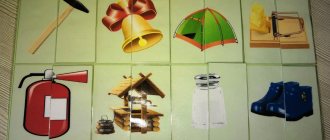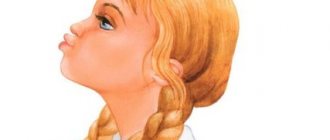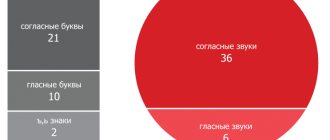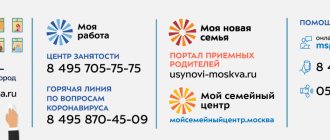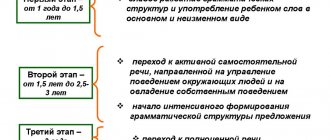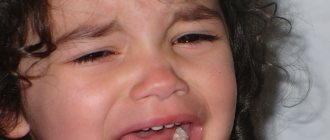Article:
The formation of coherent speech in children with speech disorders is one of the most serious problems of preschool pedagogy .
Connected speech is the most complex form of speech activity . Unformed speech negatively affects the development of all speech and mental activity , limits communicative needs, and prevents the acquisition of knowledge.
Therefore, the main task for the further successful education of children at school is to teach coherent speech skills a preschool . A child learns to think by learning to speak, but he also improves his speech by learning to think.
To study the state of coherent speech of preschool children, there are different proprietary methods . Let's look at them.
Glukhov V.P. proposed monitoring children’s in the process of play, everyday life and educational activities. The main attention is paid to the presence and level of development of children's phrasal speech skills and to the characteristics of speech behavior . For the purpose of a comprehensive study of children’s coherent speech, a series of tasks is used, which includes: drawing up sentences based on individual situational pictures; drawing up a proposal based on three pictures related thematically ; retelling the text; compiling a story based on a picture or a series of plot pictures; writing a story based on personal experience; writing a descriptive story.
Taking into account the individual level of speech development of the child, the examination program can be supplemented with accessible tasks with elements of creativity: ending the story at a given beginning; inventing a story on a given topic.
The methodology includes the following set of tasks:
• Task 1. Determine the child’s ability to compose a complete statement at the phrase level (based on the action shown in the picture).
• Task 2. Identifying children’s to establish lexical-semantic relationships between objects and transfer them in the form of a complete phrase-statement. Material: Three pictures “girl”, “basket”, “forest”.
• Task 3. Identify children’s to reproduce a literary text that is small in volume and simple in structure.
• Task 4. Compose coherent plot story based on the visual content of successive fragments-episodes.
• Task 5. Compose a story based on personal experience - aims to identify the individual level and characteristics of mastery of coherent phrasal and monologue speech when conveying one’s life impressions.
• Task 6. Write a descriptive story. Material: children can be offered both models of objects (toys) and their graphic images, which quite fully and clearly present the main properties and details of the objects .
Comprehensive examination using Glukhov V.'s method . P. allows you to obtain a holistic assessment speech ability in various forms of speech utterances - from elementary (composing a phrase) to the most complex (composing stories with elements of creativity).
The next technique to dwell on in more detail is the technique of Vorobyeva V. TO.
Vorobyova V.K. recommends coherent speech in four series.
The first series is aimed at identifying the reproductive capabilities of children’s speech and includes two tasks: retell the text in as much detail as possible; retell the same text, but briefly.
The second series of experimental tasks is aimed at identifying children’s productive speech abilities : the ability to independently create a semantic program for a coherent message based on visual supports; the ability to implement the found program into a coherent message .
This series includes two tasks. In the first task, children are asked to independently arrange a series of plot pictures in the sequence of logical development of the event. The second task directs children to compose a story using the found program.
The third series is aimed at identifying the features of constructing a coherent message in conditions of partial given semantic and lexical-syntactic components of the utterance. It includes three types of tasks: composing a continuation of the story based on the beginning read; inventing a plot and composing a story using subject pictures,
which children must select from a common bank of subject pictures; independently finding a theme and its implementation in stories.
The fourth series of tasks is aimed at clarifying the state of orientation activity, since orientation in the rules of text generation precedes the creation of a coherent monologue statement. Approximate activity consists in the ability to identify general, characteristic features inherent in the organization of this particular linguistic unit. Resolving the issue of the state of the orientational activity of children with systemic speech disorders is important for studying the structure of speech underdevelopment , in particular, for identifying the influence of speech on the formation of cognitive activity and the degree of development of children's analytical capabilities .
According to of Ushakova O. C. the development of coherent speech is assessed , in addition to the general indicators indicated above, according to special criteria that characterize the main qualities of a coherent utterance (description, story based on a series of plot paintings or on an independently chosen topic). Let us recall these indicators:
1. Content (in narration - the ability to come up with an interesting plot, develop it in a logical sequence; in description - the disclosure of small topics, signs and actions). If a child comes up with an interesting story, he gets 3 points; if the plot is borrowed - 2 points; if signs are listed - 1 point .
2. Composition of the statement: the presence of three structural parts (beginning, middle, end, arranging the plot in a logical sequence - 3 points. The presence of two structural parts (beginning and middle, middle and end, partial violation of the logic of presentation - 2 points. Absence of beginning and end – 1 point.
3. Grammatical correctness of construction of simple and complex sentences, correct agreement of words in phrases and sentences – 3 points. Using only simple sentences – 2 points. Same type designs – 1 point.
4. Various ways of connections between sentences – 3 points. Using methods of formal coordinative communication (through conjunctions a, and, adverb then ) – 2 points. Inability to connect sentences with each other – 1 point.
5. Variety of lexical means (use of different parts of speech , figurative words - definitions, comparisons, synonyms, antonyms) - 3 points. Some violation of the accuracy of word use – 2 points. Monotony of vocabulary, repetition of the same words – 1 point.
6. Sound design of the statement (smoothness, intonation expressiveness, presentation at a moderate pace) – 3 points. Intermittent presentation, minor hesitations and pauses – 2 points. Monotonous, inexpressive presentation – 1 point.
The adult gives an assessment of the completion of all tasks by calculating the total number of points.
Thus, each author offers his own methodology for studying coherent speech in children with speech disorders . When studying coherent speech, it is necessary to take into account: the lexical and grammatical design of the story, the level of mastery of children's monologue speech , the degree of independence in completing tasks, the completeness of the presentation, the semantic correspondence to the visual plot, the presence or absence of a logical and semantic organization of the message, the sequence in the description of events.
Diagnostics of the level of speech development of preschoolers 5 - 6 years old
An educational and methodological set of diagnostic methods for the speech development of children aged 5-6 years was created on the basis of a modern approach to diagnosing the mental development of preschool children. It provides detailed explanations for filling out the main sections of the children’s speech development questionnaire and suggests examination techniques available to the child.
The materials in this section will be useful not only to students of pedagogical educational institutions, they will be useful to a wide range of specialists in preschool educational institutions (educators, speech therapists, speech pathologists), as well as parents striving for the comprehensive development of their children.
Purpose: the test tasks of the proposed methodology for determining the level of speech development of preschool children are developed from an interdisciplinary perspective, which makes it possible to integrate many different parameters into a single diagnostic space that should be taken into account when assessing the speech of children. The proposed methodology can be used in practical work, either independently or in combination with other methods aimed at studying other aspects of the child’s general mental development.
Technology for determining the level of speech development of preschool children
Test tasks of the proposed methodology for determining the level of speech development of preschool children are developed from an interdisciplinary perspective, which makes it possible to integrate many different parameters into a single diagnostic space that should be taken into account when assessing children’s speech.
However, it must be remembered that speech production resulting from the performance of a particular task provides material for analysis in many respects, for example: the quantitative composition of the vocabulary and the volume of verbal memory; the level of formation of systemic connections in the lexicon and word-formation processes; concentration and distribution of attention, verbal-logical thinking and inflectional skills. In addition, during the examination it is necessary to differentiate the types of speech activity: productive (speaking) and reproductive (listening, perception).
It is very difficult to assess a child’s speech production during a diagnostic procedure, taking into account all the parameters together. Therefore, each test task involves assessing the child’s speech according to no more than two or three specific parameters.
The most clearly structurized in practical application are tasks that allow one to evaluate speech according to such parameters as:
formation of lexical system;
development of grammatical competence;
formation of phonological competence. Psychological basis of speech (operational and
long-term memory, the ability to concentrate and distribute attention, cognitive processes), as well as the semantic adequacy of the statement are assessed based on the results of completing all diagnostic tasks as a whole.
The innovative essence of the proposed methodology lies, first of all, in the fact that determining the level of speech development is not limited to its qualification assessment (level A; B; C... or level 1; 2; 3... etc.), since it is not very informative from the point of view of predicting the prospects for the child’s further speech development. Not to mention the fact that speech assessment in its “pure form”, i.e. regardless of specific situations (level of aspirations, living conditions, social environment, physical condition, etc.), does not seem to be effective.
Speech production is assessed based on qualitative characteristics. The parameters displayed in summary tables for each age are easily combined into modular series depending on the aspect of speech of interest. Thus, the test results can provide both a general assessment of the child’s speech development in scores relative to the maximum possible, and a detailed descriptive description of individual parts of the speech-language mechanism, which are sometimes very unevenly developed in children. In such situations, the same total number of points for children does not at all reflect the true picture of their speech development and, even more so, does not determine a single route for their speech therapy support.
The use of these tests allows you to analyze the dynamics of speech development according to certain parameters.
I would especially like to emphasize that the results of this testing should be considered in descriptive terms as a detailed description of the child’s speech development.
As a result of the diagnostic procedure, a holistic picture of the child’s speech development should emerge, allowing one to predict and evaluate the further prospects for the development of his communicative competence.
The proposed methodology can be used in practical work, either independently or in combination with other methods aimed at studying other aspects of the child’s general mental development.
Age: preschool children - 5-6 years.
It is advisable to precede the language testing itself with a short interview in order to make sure whether possible errors in speech are not only a consequence of an impoverished understanding of the world around us.
What is your name? How old are you? What city do you live in now? What days of the week do we rest? What animals live in the forest? (3-5 words) Who is congratulated on March 8th? What holiday does Santa Claus congratulate us on? When do migratory birds fly south? What floor do you live on? What should you do if you are about to cross the street, but the traffic light is yellow? What month is it? What fairy tales do you know? (2-3 tales)
SCORE: adequate answer - 1 point, inadequate - 0 points. The maximum number of points is 12.
Block I
The main goal of the test tasks of this block is to determine the level of formation of lexical systematicity, which is assessed according to two main parameters: the volume of the dictionary and the variety of connections (semantic and formal) between lexical units.
Exercise 1 . Name what you see in the pictures.
Drawings:
A. birdhouse, chandelier, nest, weight, jug, pliers, briefcase
B. maple, rowan, bells, dandelion, oak, chamomile, lily of the valley.
V. tit, bullfinch, swallow, turkey, woodpecker, rhinoceros, hippopotamus, lynx.
G. currants, cherries, raspberries, radishes, eggplants, beets, zucchini.
D. cap, Panama hat, overalls, jacket, tie, shoes, sandals.
SCORE: correct - 1 point, incorrect - 0 points. The maximum number of points is 36.
Task 2. Look at the pictures and say what each of these items is needed for.
Drawings: refrigerator, bread box, screwdriver, feeder, nets, ladle, stretcher (sheet 5-6).
SCORE: adequate answer - 1 point, inadequate - 0 points Maximum number of points - 7.
Task 3 . Look at the pictures and say why they were placed next to each other
Drawings (in pairs): sugar bowl - sugar; screw - screwdriver; sweater - ball; scooter - bicycle.
SCORE: semantic connection established - 1 point, not established - 0 points. The maximum number of points is 4.
Task 4. Look at the pictures and say how the objects depicted in them differ. Drawings: screw-nail; sweater; coat—fur coat; stool-chair
ASSESSMENT: adequate answer (highlighting essential features I -
1 point, inadequate - 0 points. Maximum points - 4
Task 5. Look at the pictures and say who is doing what. Drawings:
A girl pours sour cream over dumplings.
A boy colors a picture.
The girl sprinkles poppy seeds (salt, sugar) on cookies.
The boy is knocking out the carpet.
The girl pours out the water.
SCORE: correct - 1 point, incorrect - 0 points. The maximum number of points is 5.
Task 6. Listen to the words and say which ones are superfluous. Explain your choice. Words:
cherries, raspberries, gooseberries, chamomiles, strawberries;
carrots, cucumbers, turnips, apples, zucchini.
SCORE: correct answer - 1 point, incorrect answer - 0 points. The maximum number of points is 2.
Task 7. Explain the meaning of the words: oiler, diaper, herring, trainer, collar, skier, chess player, tourist.
SCORE: adequate answer - 1 point, inadequate - 0 points. The maximum number of points is 8.
Task 8. What is the name of the profession of a person who: works on a tractor, cleans the yard and street, shows magic tricks, plays the guitar, violin, guards the forest?
SCORE: correct answer - 1 point, incorrect answer - 0 points. The maximum number of points is 6.
Task 9. Guess what word will be next.
Example: Chicken - chicken; pig - piglet.
Cow - calf; dog - ?
Crow - nest; ant - ?
Pilot - airplane; driver - ?
Goat - goat; chicken - ?
Fish - fishing rod; butterfly - ?
SCORE: correct - 1 point, incorrect - 0 points. The maximum number of points is 5.
Block II
The main purpose of the test tasks in this block is to determine the level of grammatical competence. The main criterion for assessing grammatical competence is the development of inflectional and word-formation skills and abilities.
Task 10. Answer the questions. What kind of ball do we call a soccer ball? What kind of barrel do we call oak? What kind of snake do we call poisonous? What branch do we call pine? What kind of skis do we call mountain skis? What kind of glasses do we call sunglasses? What kind of machine do we call a snowblower? SCORE: adequate answer - 1 point, inadequate - 0 points Maximum number of points - 7.
Task 11. How will the word change if there are more than one of these objects? Sample: leaf—leaves. Words: wheel, ear, feather, hammer, stump, lollipop. SCORE: correct - 1 point, incorrect - 0 points. The maximum number of points is 6.
Task 12. Look at the pictures and say what is shown on them and how much. Drawings: six cups, five buttons, five tassels, five pencils, six axes, five dolls (sheet 5-10). SCORE: correct - 1 point, incorrect - 0 points. The maximum number of points is 6.
Task 13 . Call it something else. Example: An oak leaf is an oak leaf. A lilac bush is... Blueberry juice is... A birch trunk is... A cherry pit is... Strawberry jam is... Apricot juice is... SCORE: correct - 1 point, incorrect - 0 points. The maximum number of points is 6.
Task 14. Complete the sentence. The tiger lives with the tigress, and the lion... The hair of a goat is goat hair, and the wool of a sheep... A guitarist plays the guitar, and the violin... Strawberry jam is made from strawberries, and from currants... The cat's tail is a cat's tail, and the tail of a fox... RATING: correct - 1 point, incorrect - 0 points. The maximum number of points is 5.
Task 15. Guess what word will be next. Pepper - pepper shaker, soap - ? Pine - pine, strawberry - ? Pilot - fly, trainer - ? Long - longer, short - ? Fish - fish, meat - ? SCORE: correct - 1 point, incorrect - 0 points. The maximum number of points is 5.
Task 16. Look at the pictures and say where the animals are and what they are doing. Drawings: a cat under a chair, a cat on a fence, a cat behind a tree, a dog jumping over a barrier (over a barrier), a cat jumping off a chair (sheet 5-11). SCORE: correct - 1 point, incorrect - 0 points. The maximum number of points is 5.
Task 17. Listen and repeat the sentence without changing the words. Autumn has come, and migratory birds have flown south. An accordion player plays the button accordion, and a violinist plays the violin. Every morning, sparrows chirp cheerfully outside my window. SCORE: correct - 1 point, incorrect - 0 points. The maximum number of points is 3.
Task 18. Listen to the sentence and answer the questions. Katya is two years older than Ira. Who is younger: Katya or Ira? Petya was accompanied by his grandfather. Who was leaving? After breakfast, grandfather read the newspaper. What did grandfather do earlier: have breakfast or read the newspaper? SCORE: correct - 1 point, incorrect - 0 points. The maximum number of points is 3.
Block III
The main purpose of the test items in this block is to assess phonological skills and abilities. This assessment consists of the results of a survey of phonemic processes, skills of sound analysis and synthesis, and phonetic design of speech.
Task 19. Repeat the words: excavator, escalator, architect, shipwreck, plumber, airport. SCORE: correct - 1 point, incorrect (omissions, distortions, rearrangements are considered an incorrect answer) - 0 points. Maximum points - 6
Task 20. Repeat the syllables: pa-ba-pa; ashi-asy-ashi; seam-shva-zhva; kra-gra-kra; san-tsang-tsang. SCORE: correct - 1 point, incorrect - 0 points. The maximum number of points is 5.
Task 21. A. Listen to the words and say which of them have the sound [s]. Words: vase, acorn, beetle, braid, castle, wardrobe, cactus, jug, tie_ RATING: correct (named all the words) - 1 point, incorrect (; made at least one mistake) - 0 points. The maximum number of points is 1. B. Listen to the words and say which of them contain the sound [z]. Words: vase, acorn, beetle, braid, castle, cabinet, cactus, jug, tie. SCORE: correct (named all the words) - 1 point, incorrectly made at least one mistake) - 0 points. The maximum number of words is 1. The maximum number of points for the entire task is 2.
Task 22.
- Listen to the words and say which sound you hear first. Words: vase, acorn, braid, duck, tie.
RATING: correct (named all the initial sounds) - 1 point, incorrect (made at least one mistake) - 0 points. The maximum number of points is 1.
B. How many sounds are in the word “beetle”?
SCORE: correct - 1 point, incorrect - 0 points. The maximum number of points is 1.
- How many sounds are in the word "vase"?
SCORE: correct - 1 point, incorrect - 0 points. The maximum number of points is 1.
The maximum number of points for the entire task is 3.
Task 23. Repeat the syllables with different stress: don -don-don, don -don -don, don-don -don; cha -cha-cha, cha-cha -cha, cha -cha -cha. SCORE: correct - 1 point, incorrect - 0 points. The maximum number of points is 6.
Task 24. Repeat the sentences with different intonations. Did mom go to the store yesterday ? mom go to the store yesterday? Did mom go yesterday ? SCORE: correct - 1 point, incorrect - 0 points. The maximum number of points is 3.
Task 25. Give an affirmative answer to the question. Did grandpa go to the pharmacy yesterday ? (Yes, to the pharmacy.) Did your brother yesterday ? (Yes, yesterday.) Did Lena go to the theater yesterday? (Yes, I went.) SCORE: adequate answer - 1 point, inadequate - 0 points. The maximum number of points is 3.
Block IV
The main goal of the tasks in this block is to assess the level of formation of a coherent speech utterance (text activity), which is the result of a cumulative analysis of understanding and independent production/reproduction of a text of a narrative nature in accordance with the proposed plot.
Task 26. Listen to the story and answer the questions. Like a hedgehog walking in the forest A gray hedgehog went for a walk in the forest on a dark night. I saw a leaf and pinned it on needles. I saw a berry and pricked it too. He noticed a blue star in a puddle. I wanted to stab her too, but nothing came of it. The hedgehog thought, thought and decided to cover it with burdock - let it lie there until the morning. And in the morning, instead of a blue star, he found a large red sun in a puddle.
Questions: When did the hedgehog go for a walk? What did the hedgehog see in the forest? What did the hedgehog cover the star with? What did the hedgehog see in the puddle this morning? Why did the sun turn out to be in the puddle instead of a star? SCORE: for each correct answer - 1 point, incorrect - About points. The maximum number of points is 5.
Task 27. Arrange the pictures in the required sequence to make a story. Pictures (given mixed): The boy jumped over the puddle and walked on, and the girl stopped near her.
- The boy looked around, and the girl was crying.
- The boy returned, brought a plank and threw it over the puddle.
- The boy helped the girl cross the puddle.
ASSESSMENT: completed the task independently - 2 points, completed the task with a little help - 1 point, failed to complete the task - O points. The maximum number of points is 2.
Task 28. Make up a story based on these pictures (the same pictures). GRADE:
2 points:
a) the story conveys the plot correctly;
b) the story contains both basic and additional information;
c) the topic is fully disclosed;
d) the child does not experience difficulties in formulating the content.
1 point:
a) the plot is conveyed partially;
b) the logical sequence of events is not violated;
c) the story contains only basic information (the topic is partially covered);
d) the child experiences some difficulties in formulating the content.
0 points:
a) the story does not convey the proposed plot;
b) the logical sequence of events is violated;
c) the child experiences significant difficulties in formulating the content of the text.
The maximum number of points (points are summed) is 8.
Task 29. Listen to the story. Repeat it as you remember.
Lion and bear.
The lion and the bear got meat. They decided to feast on it, but were unable to divide the spoils. None of them wanted to share. They began to fight over meat. They fought for a long time, and then they both weakened and lay down on the ground. At this time, a fox ran past. She saw the meat, quietly crept up to it and dragged it into her hole. So, because of their greed, the lion and the bear remained hungry.
GRADE:
2 points:
a) the retelling fully conveys the content of the text;
b) retelling includes both basic and additional information;
c) when retelling, variability of speech is used.
1 point:
a) the content of the text is partially conveyed;
b) the retelling contains only basic information;
c) the vocabulary and syntactic structures of the original are used.
0 points:
a) the retelling does not correspond to the original;
b) the semantic organization of the text is disrupted;
c) significant difficulties in the linguistic design of the text. The maximum number of points (points are summed) is 6.
Literature.
Bezrukova O.A., Kalenkova O.N. Methodology for determining the level of speech development of preschool children / O.A. Bezrukova, O.N. Kalenkova; artist N.N. Butusova [and others]. - M.: Kaissa, 2008. - 95 p.
“Help on the site” - click on the image - hyperlink to return to the previous page - “DIAGNOSTIC TECHNIQUES FOR EXAMINING DIFFERENT ASPECTS OF SPEECH IN PRESCHOOL CHILDREN” .

